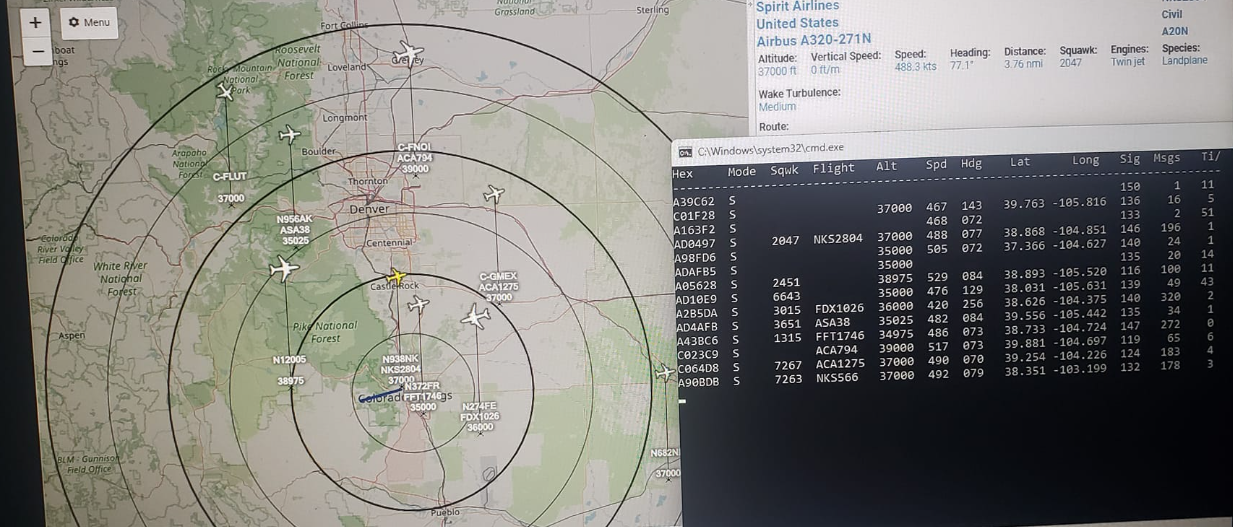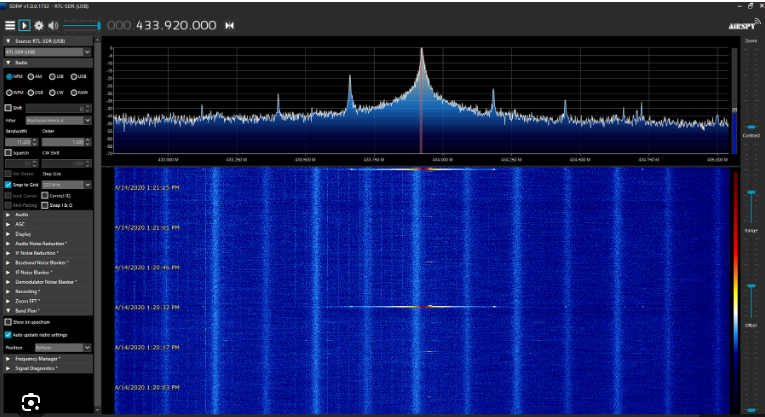Whether you’re developing another leg of your OSINT package or new to the world of software defined radio, plane tracking is a cool demonstration of basic signals intelligence without breaking the bank.
Hard/Software
Needed hardware are an ADS B antenna, a band pass filter+ LNA, an RTL SDR, SMA male to SMA male adapter.
Needed software are Windows 11 computer, dump1090, Virtual Radar Server (VRS), Notepad++ & SDR++.
The ADS-B Antenna will receive the GPS coordinates and plane identification data, the bandpass filter will reject all out of band signals and amplify the in band signal, then the RTL SDR/ Windows 11 computer connection ports the data to dump1090– which formats the data into human readable text and the Virtual Radar Server overlays the data with silhouettes, plane data, and map overlay.
When connecting the SMA side of the ADS-B antenna to the band pass filter, pay attention so that you’re connecting it to the 1090MHz port and NOT the 978MHz portion as seen below. Also ensure that you connect the antenna to the INPUT side of the filter amplifier, not the output.

